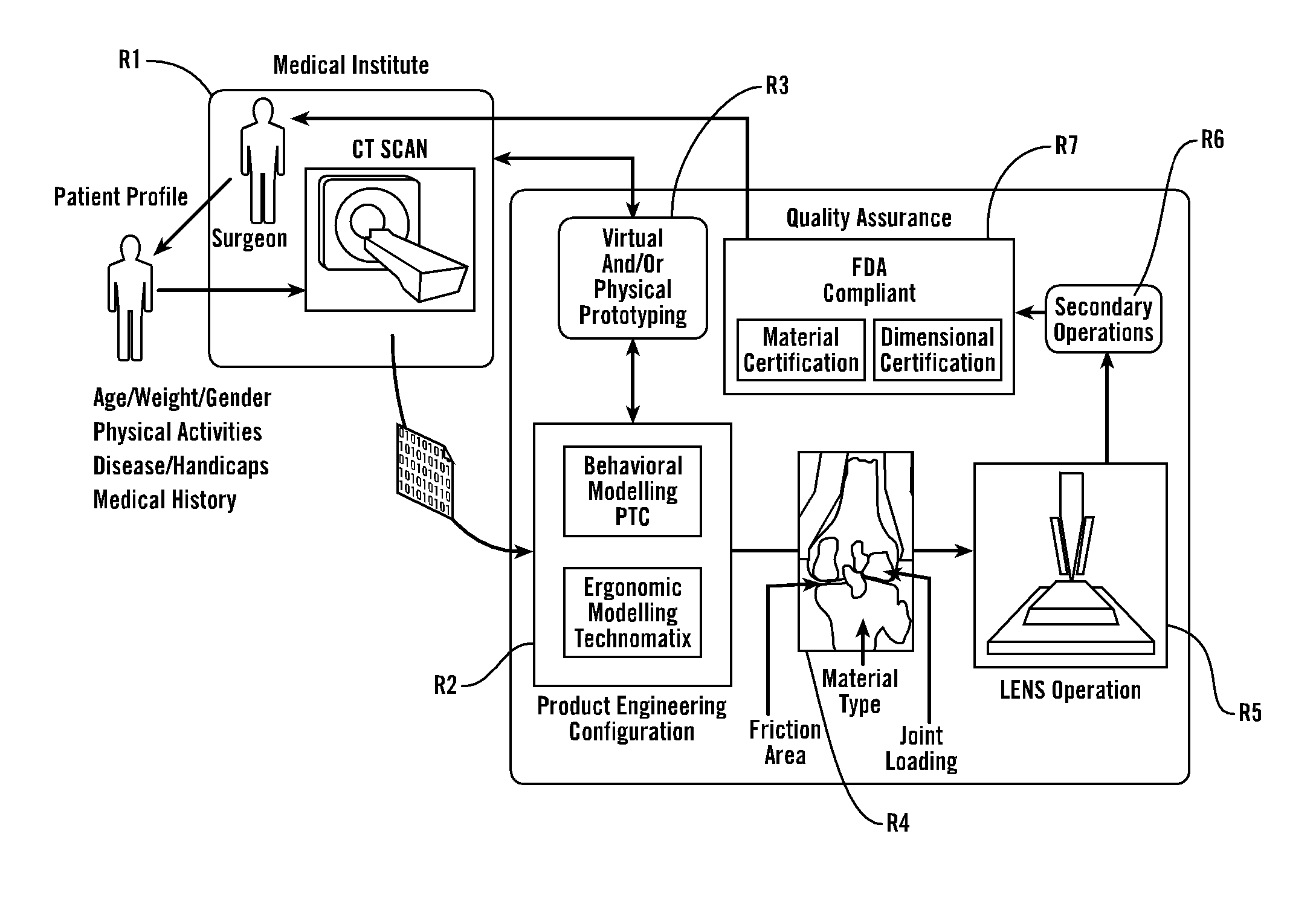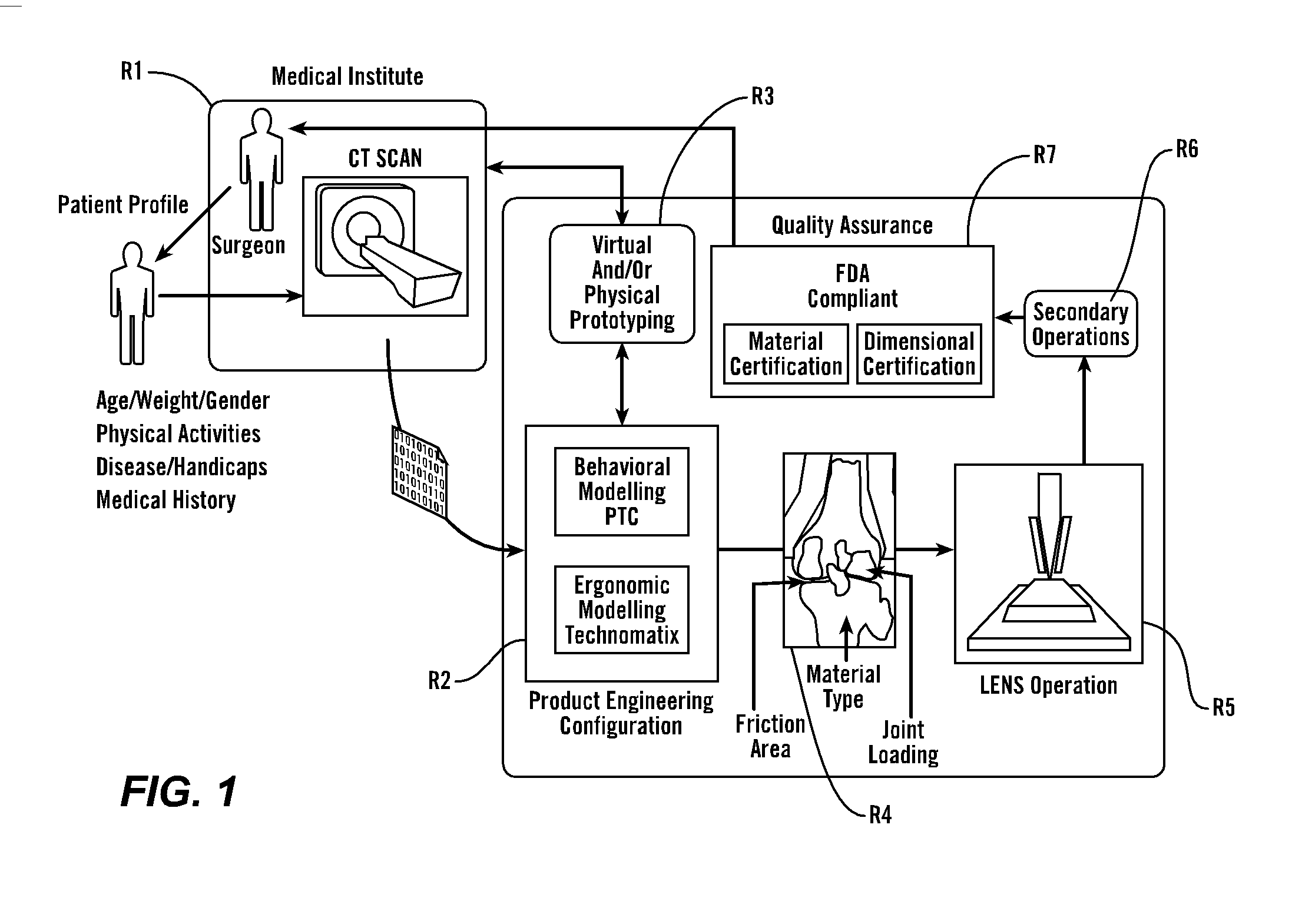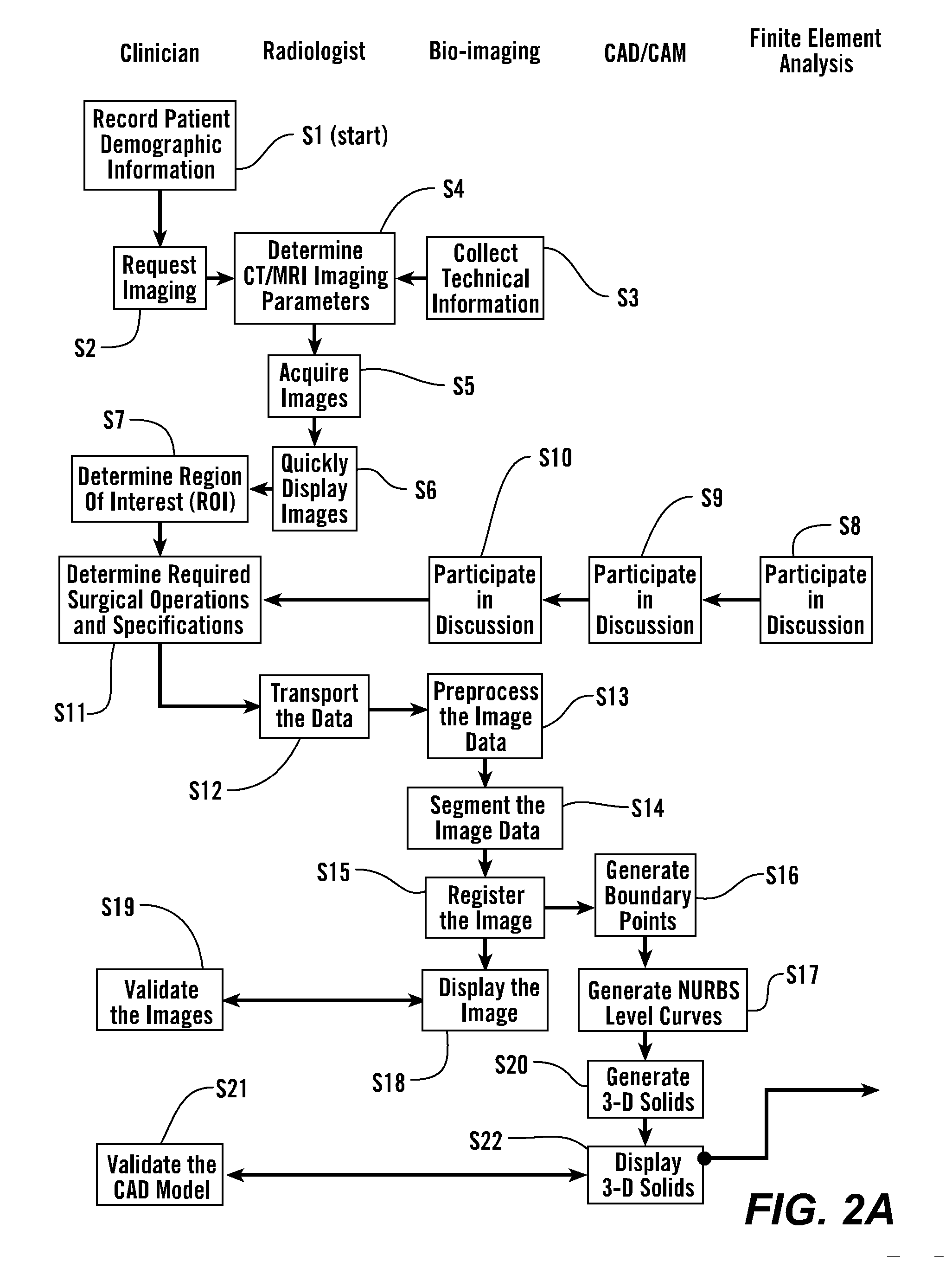Personal fit medical implants and orthopedic surgical instruments and methods for making
a technology of orthopedic surgical instruments and implants, applied in the field of personal fit medical implants and orthopedic surgical instruments and methods for making, can solve the problems of inability to meet the approval criteria, inability to remove otherwise healthy or undamaged tissue, and inability to achieve optimal fit in most cases, so as to minimize the effect of ni toxicity
- Summary
- Abstract
- Description
- Claims
- Application Information
AI Technical Summary
Benefits of technology
Problems solved by technology
Method used
Image
Examples
examples
Preferred Exemplary Embodiments
[0066] As shown in FIG. 1, in a preferred embodiment, the present invention provides methods and tools to produce implantable medical devices that will precisely fit individual patients. The present invention also comprises medical appliances and tools and implements designed and created through the disclosed process. Generally, the invention is implemented through a combination of technologies including medical imaging (including CT, NMR, X-ray, ultrasound, laser interferometry and others) and patient consultation R1. Next, the product engineering configuration R2 analysis is implemented using both behavioral modeling (WHAT IS PTC?) and ergonomic modeling technomatix analysis. Next, virtual and / or physical prototyping is performed R3 which allows for validation of the product engineering results by further reference with R1. Then, in R4, analysis of the implant site identifies the friction area, analyzes the joint loading and identifies material type...
example i
Image Acquisition and Analysis
[0067] As shown in FIGS. 2A and 2B, in some embodiments, the process starts with step S1 where the patient's demographic information is recorded and the clinician makes a request for imaging, S2. 3-Dimensional image data is obtained from the patient S4 and presented for clinical evaluation with the cooperation of multiple specialists, S3 and using the invention described herein (FIGS. 1 and 2A). This uses multiple steps as listed in Table 1, and further elaborated below.
TABLE 1Image Acquisition and Analysis1CT / MRI Image calibration2Calibration of laser surface contour scanning to determine surfacestructure as required for certain applications3Physical correlation of pixel data for precise reconstruction of thepatient's anatomical structure4In situ validation5Establish protocol for image acquisition and transport6Troubleshooting of various imaging parameters - size, intensity,orientation, spacing, etc.7Image file format, size, and transport medium8Ima...
example ii
Manufacturing
[0084] The design created above is fabricated using direct computer aided manufacturing (CAM) digital methods to produce the implant with laser-based additive free-form manufacturing as described above, S33. Fabrication of each component is performed with the desired material or materials directly from powdered metals (and certain other materials) that are delivered to the desired spatial location and then laser annealed in place (using, for example, DMD, LENS or the like) or annealed using an electron beam (EBM). This produces a very high strength fine-grain structure, enables the fabrication of internal features, enables layers of multiple materials, gradients of material properties, inclusion of ancillary internal elements, and produces resultant structures that generally require minimal post-fabrication processing.
[0085] Multiple materials are applied sequentially, locally, and in specific locations, if required to achieve desired properties For example, the bone ...
PUM
 Login to View More
Login to View More Abstract
Description
Claims
Application Information
 Login to View More
Login to View More - R&D
- Intellectual Property
- Life Sciences
- Materials
- Tech Scout
- Unparalleled Data Quality
- Higher Quality Content
- 60% Fewer Hallucinations
Browse by: Latest US Patents, China's latest patents, Technical Efficacy Thesaurus, Application Domain, Technology Topic, Popular Technical Reports.
© 2025 PatSnap. All rights reserved.Legal|Privacy policy|Modern Slavery Act Transparency Statement|Sitemap|About US| Contact US: help@patsnap.com



